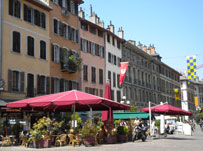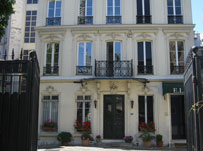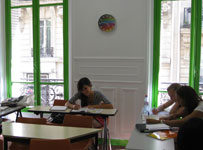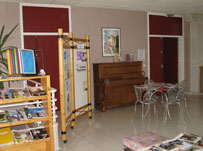Great value French courses abroad
Granted, there are other factors than just the price of the course fees to consider when you’re looking into booking a language course abroad. Accommodation, travel and the general cost of living all need to be taken into consideration before you decide upon your destination and course, but below are the best value options for course fees at the moment – all are based on the price of a week-long General French course.
1. Lyon (£149/$234)
Given that Lyon is widely regarded as the gastronomic capital of France, it may come as a surprise that learning French there is so affordable. Of course, it has its fair share of Michelin starred restaurants, but the city itself is down to earth and unpretentious. It enjoys a fantastic location close to the Alps and to Paris, and is a thriving and lively university city.
Lyon’s enviable location assures it great transport links, both in terms of train and air travel. As a result, it’s easy and affordable to reach from all over Europe.
The General French course at the school in Lyon currently costs £149 and includes 15 lessons per week, giving you plenty of time to enjoy the city and practise your French outside of classroom hours. Accommodation can be arranged either with a local host family, or in a student residence, depending on your preference.
Find out more on the General French course in Lyon
2. Chambery (£179/$280)
Boasting a prime location in the heart of the Savoie region in the French Alps, the pretty town of Chambery makes a fantastic French study destination. It offers compact, friendly surroundings, where you’ll be able to practise your French to your heart’s content. 
During the winter season, you’ll also have easy access to the many nearby slopes if you fancy some skiing in your free time. And on top of that, the courses are fantastic value.
Currently, a week’s General French course at the school in Chambery costs £179, and the team there can also arrange accommodation with a local host family for you.
Find out more on the General French course in Chambery
3. Paris Victor Hugo/ Nice City Centre (£209/$326)
Currently, the Victor Hugo school in Paris and the City Centre school in Nice are both offering week-long General French courses for £209. Admittedly, although they’re exciting, attractive and glamorous, neither city is known for its affordability. That said, if you go out of the peak tourist season and research your accommodation options carefully, they can still be viable options.
The Victor Hugo school in Paris enjoys a great location close to the Champs Elysees and the Eiffel Tower. It’s situated in a really attractive and central area, but one of the school’s main attractions lies with its lovely team of teachers and staff, who are really approachable and who organise a fantastic (and affordable) programme of activities for students.
Accommodation can be arranged for you with a local host family, or in a student residence if you prefer a little more independence. 
The City Centre school in Nice is located close to the train station, and just a 15 minute walk from the famous Promenade des Anglais and distinctive blue sea. It offers students a great range of facilities, and classes with a good mix of nationalities to ensure that French is spoken at all times.
Accommodation options for students in Nice include a room in an apart hotel, which is handy for low-cost self-catering, a room in a student residence, or lodgings with a local host family.
Find out more on the General French courses in Nice (City Centre) and Paris (Victor Hugo)
For full details of Cactus’ French courses and prices in France, Belgium, Monaco, Switzerland, Guadeloupe and Canada please visit the Cactus Language site.
*Please note that prices were accurate at the time of writing but may change as a result of currency fluctuations.







 I shall refrain from excessively commenting on this extremely pretty town and hop straight to the reason behind my visit (besides the warm sunshine in December) – the
I shall refrain from excessively commenting on this extremely pretty town and hop straight to the reason behind my visit (besides the warm sunshine in December) – the  The school is located right in the heart of the town and just down the street from a very impressive and well-preserved Greek Theatre. Down some orange-tree-lined steps and through a wall you will find the school which exploits a renovated villa to stage its Italian classes. The large patio and garden which was once public is now a sanctuary, a botanical and exotic wilderness of citrus trees, plants and flowers that presents the perfect backdrop for learning the very romantic language.
The school is located right in the heart of the town and just down the street from a very impressive and well-preserved Greek Theatre. Down some orange-tree-lined steps and through a wall you will find the school which exploits a renovated villa to stage its Italian classes. The large patio and garden which was once public is now a sanctuary, a botanical and exotic wilderness of citrus trees, plants and flowers that presents the perfect backdrop for learning the very romantic language.
 NB. Please note that my route to Palermo was not conventional and did take a very long time. Although the bus journeys presented the opportunity to see much more of the island, it is not advised if you are limited by time. It is possible to fly to Catania where the school in Taormina can arrange a short transfer to the school.
NB. Please note that my route to Palermo was not conventional and did take a very long time. Although the bus journeys presented the opportunity to see much more of the island, it is not advised if you are limited by time. It is possible to fly to Catania where the school in Taormina can arrange a short transfer to the school.